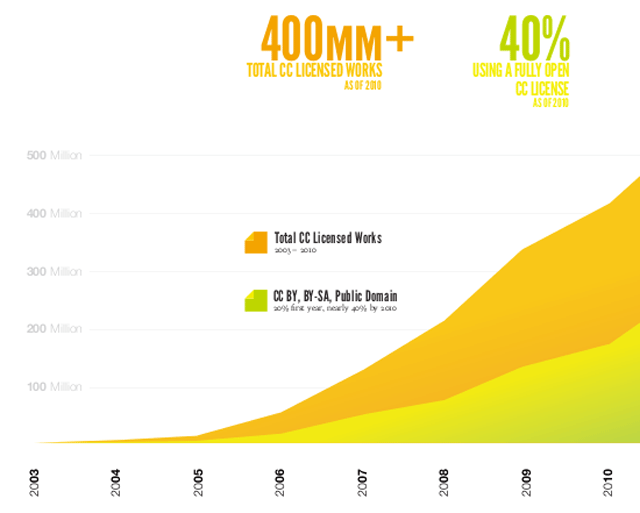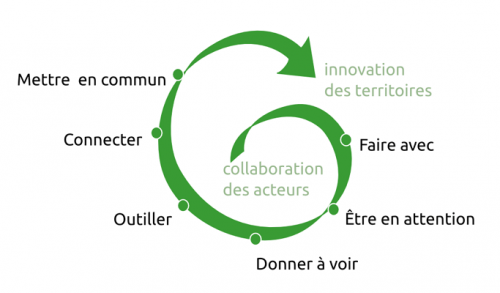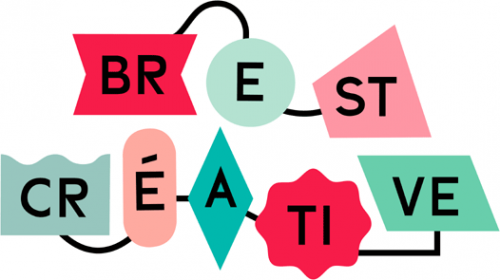Movements such as Creative Commons and Collaborative Consumption are often mentioned in the same breath. But what do these two movements really have in common ? Frank Hoogendijk investigates.
“The Times they are A Changin’”[1] Bob Dylan’s song shed light on new phenomena. I plead guilty for being one of those people who lacks creativity to come up with his own phrase – but who am I to try to invent something better than one of the most influential cultural figures alive ?
On the other hand, maybe I could try to improve it (probably not, but bare with me) if I had the ability to use his song or his lyrics to create an adaptation, a remix of it. In other words : If Bob wanted to, he could share something he owns to the benefit of others, creativity and the free flow of information on the web. He could use (free !) open source licenses or, to be more specific, Creative Commons to indicate that everyone that he or she gives permission to can use that work in a certain way.[2] [3]
This shows an interesting parallel between Creative Commons and Collaborative Consumption : the shift from ownership to usership[4]. A changing (or should I say changin’) mentality that is definitely here to stay.[5]
Collecting the fruit of your work or collecting dust ?
If you are a gifted writer or a groovy musician… It really doesn’t matter since every original work is automatically protected under Copyright Law[6]. Until a few years ago you were not even allowed to manage your work yourself, but needed a publicist or a record company that would distribute it and enable you to earn money with it. For this reason a lot of great works have never seen daylight and were never validated in any way.
However today it has become normal to upload, share and download creative works via the internet. Creative commons licenses have been used by authors worldwide on over 400 million works, around which a whole new and steadily growing economy has emerged.
A similar story is unravelling with Collaborative Consumption. As Antonin Léonard put it in his first article here on OuiShare.net : “We are now at the dawn of a third age of the internet, where people connect online to share (stuff, experiences) and collaborate offline.” We are now able to share or rent out our cars, houses, DVD’s, tennis rackets and many other things that would otherwise sit idle on our driveway, stay home when we are on a holiday or just gather dust in a long forgotten corner of our garage…
All rights reserved or no rights reserved ? Let’s meet in the middle.
Creative Commons licenses have made it easy to share creative works that are protected by copyright. Crucial to note is that it does this with respect to all property rights of the authors and is in no way related to platforms that enable copyright infringements such as peer-to-peer file sharing networks.
The same way Creative Commons increases the free flow of information on the Web, Collaborative Consumption enables individuals to give the public access to goods under certain conditions (such as possible payment conditions, the agreement to be reviewed, etc.). Instead of a No rights reserved approach, collaborative consumption has created an alternative way for individuals to exercise their rights of ownership, increasing the flow of assets.
Collaborative Consumption is to peer-to-peer file sharing what Creative Commons is to Napster.
This may sound a little weird at first, but think about it. It is precisely the respect for property rights that encourages people to share. What artist would share his song for free if he knew that anyone using it would do this without respecting his right of attribution or, more generally, infringe any of the rights he did not explicitly waive in his license ? Who would share his car knowing it will be returned late, with broken windows, or a banana in the exhaust pipe ? Ok, the latter would just be a brilliant joke, but nevertheless it evident that a fundamental level of respect is crucial for people to be able to trust others enough to give them access to what they own.
Determining certain conditions of use, whether it is the obligation of attribution and to not create derivates, or the obligation to return a car with a full tank of gas and without scratches, and respecting these property rights by living up to these expectations, are key. In Creative Commons terms this is called the some rights reserved approach.
Lawrence Lessig, one of the founders of Creative Commons, beautifully describes this in his book Free Culture :
The debate so far has been framed at the extremes — as a grand either/or : either property or anarchy, either total control or artists won’t be paid. What’s needed is a way to say something in the middle — neither “all rights reserved” nor “no rights reserved” but “some rights reserved” — and thus a way to respect copyrights but enable creators to free content as they see fit. In other words, we need a way to restore a set of freedoms that we could just take for granted before.
I would argue this some rights reserved approach also applies to the world of Collaborative Consumption.
Growing from the bottom-up
Even though the letter C’s for this article are running out, there are many more parallels between the CC of the beginning of the 21stcentury (Creative Commons was founded in 2001) and the CC of the twentie-tens (or the Tennieswith a fancy neologism). Open source licensing initiatives have a global community of very active enthusiasts, similar to the ones Collaborative Consumption initiatives have generated. Both phenomena have grown from the bottom up and challenge the existing status quo of governments and institutions(think of insurance companies) on a worldwide scale.
The ideas and concepts that were at the root of Creative Commons as well as Collaborative Consumption are part of a golden seed, growing in the fertile ground of the internet, nourished by the rise of social networks, the economic crisis and an increasing awareness for environmental impact. Now this seed has grown into a beautiful tree with several branches and an enormous sustainable growing potential to renew the oxygen that will fuel our economies in the near future.
Notes :
[1] Bob Dylan, The Times They Are a-Changin’ (1964), Copyright © 1963, 1964 by Warner Bros. Inc., renewed in 1991, 1992 Special Rider Music.
[2] The open source movement was initially focused on software licensing such as the GNU-GPL licenses. During the end of the 90’s and the beginning of the 21st century the open source movement broadened and began incorporating open content, open access, free software, …
[3] The author can determine several conditions. He can determine whether or not commercial use of the work or any modification of the work is allowed. It can also be determined by the author that any modification should be shared under the same conditions. The authors name always needs to be attributed by anyone using the work (more information on the different licenses)
[6] As you probably know, this means that you are the only owner of the work and you have exclusive property rights over it. This was achieved almost globally by the Bern Convention. Nevertheless this convention is a good example of how outdated some copyright principles and techniques can be since it dates back to 1886.
Photo Credit : CC Giulio Zannol
Cet article The common ground between Creative Commons and Collaborative Consumption est apparu en premier sur OuiShare.






